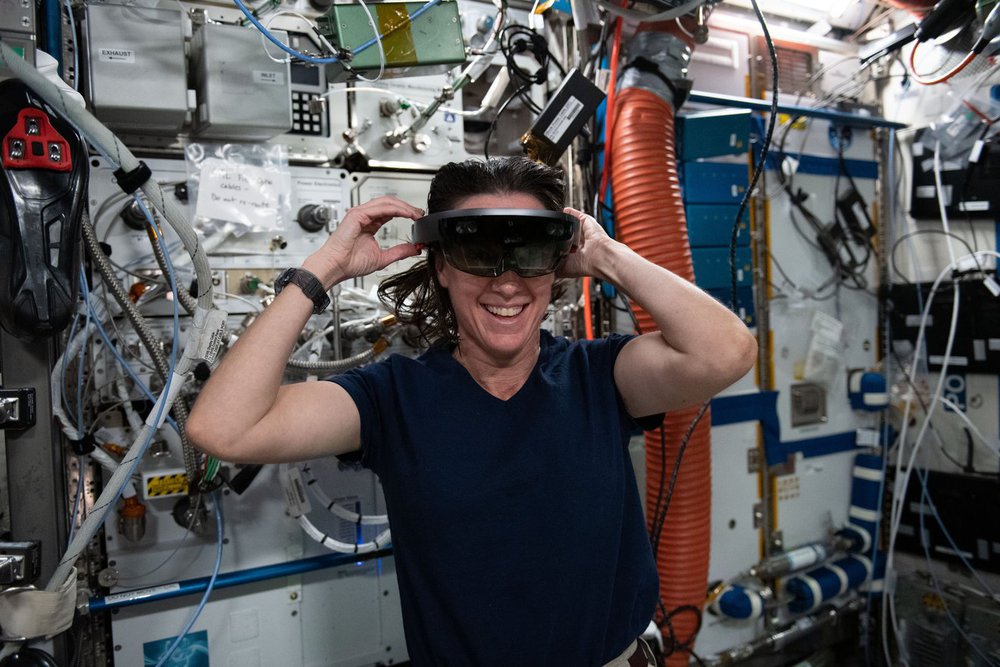News | May 31, 2022, 5:55 p.m.
Upgrading the Space Station’s Cold Atom Lab With Mixed Reality

NASA’s Cold Atom Lab is a first-of-its-kind physics laboratory operating in Earth orbit. About the size of a mini-fridge, it hosts multiple experiments that explore the fundamental nature of atoms by cooling them down to nearly absolute zero (the coldest temperature matter can reach). The ultracold atoms provide a window into the quantum realm, where matter exhibits strange behaviors that underpin many modern technologies.
In 2020, during her extended stay aboard the space station, NASA astronaut Christina Koch worked with Earth-based mission team members to install upgraded hardware in Cold Atom Lab. Along with adding new capabilities to the novel facility, the effort proved something else: that such maintenance could be performed without the need to lug the laboratory back to Earth.
Plans are underway for a series of additional upgrades to Cold Atom Lab in the coming years, so the mission team is investigating ways to make these activities more efficient. Earlier this summer, they successfully tested a new tool that could help with that goal: a Microsoft HoloLens, a mixed reality (also known as augmented reality, or AR) headset. On July 15, astronaut Megan McArthur used the AR headset while she replaced a piece of hardware inside Cold Atom Lab, enabling the facility to produce ultracold potassium atoms in addition to the rubidium atoms that have been used since the facility started operating in 2018.
Mixed reality headsets such as the HoloLens look like wraparound sunglasses, and unlike virtual reality headsets (which produce an entirely virtual setting), the HoloLens has transparent lenses that blend the virtual and real worlds together. This allowed McArthur to see the area around her, and a small forward-facing camera on the headset allowed members of the Cold Atom Lab team, watching on large screens in the Earth Orbiting Missions Operations Center at NASA’s Jet Propulsion Laboratory in Southern California, to see whatever she was looking at. By contrast, during the 2020 activity with Christina Koch, the team could see a live video feed only from a fixed camera positioned behind or above the astronaut, leaving their view of the hardware mostly obscured.
McArthur could also see virtual graphic annotations, such as text and arrows, placed in her field of view by the Cold Atom Lab operations team. For example, as she looked at a series of cables, the mission team could place an arrow in her field of vision, pointing to the specific cable she needed to unplug. Even if she were to move her head away and back again, the arrow would remain pointing at the same cable location.
Virtual reality headsets have been used for various applications aboard the space station, and mixed reality has been used in a few cases. But usually, the goal of these activities is to make it easier for an astronaut to perform a task alone. The Cold Atom Lab hardware replacement activity marked the first use of a mixed reality headset to improve the live interaction between an astronaut and engineers on Earth; it also marked the first use of mixed reality to repair a science experiment on the station. Preparation for the activity took six months, with collaboration between NASA’s JPL, Johnson Space Center in Houston, and Marshall Space Flight Center in Huntsville, Alabama.
“Cold Atom Lab is investing in the use of this technology on the space station not just because it’s intriguing, but because it could provide additional capabilities for these complex tasks that we rely on astronauts to perform,” said Kamal Oudrhiri, Cold Atom Lab’s project manager at JPL. “This activity was a perfect demonstration of how Cold Atom Lab and quantum science can take advantage of mixed reality technology.”
Read the full article at nasa.gov
